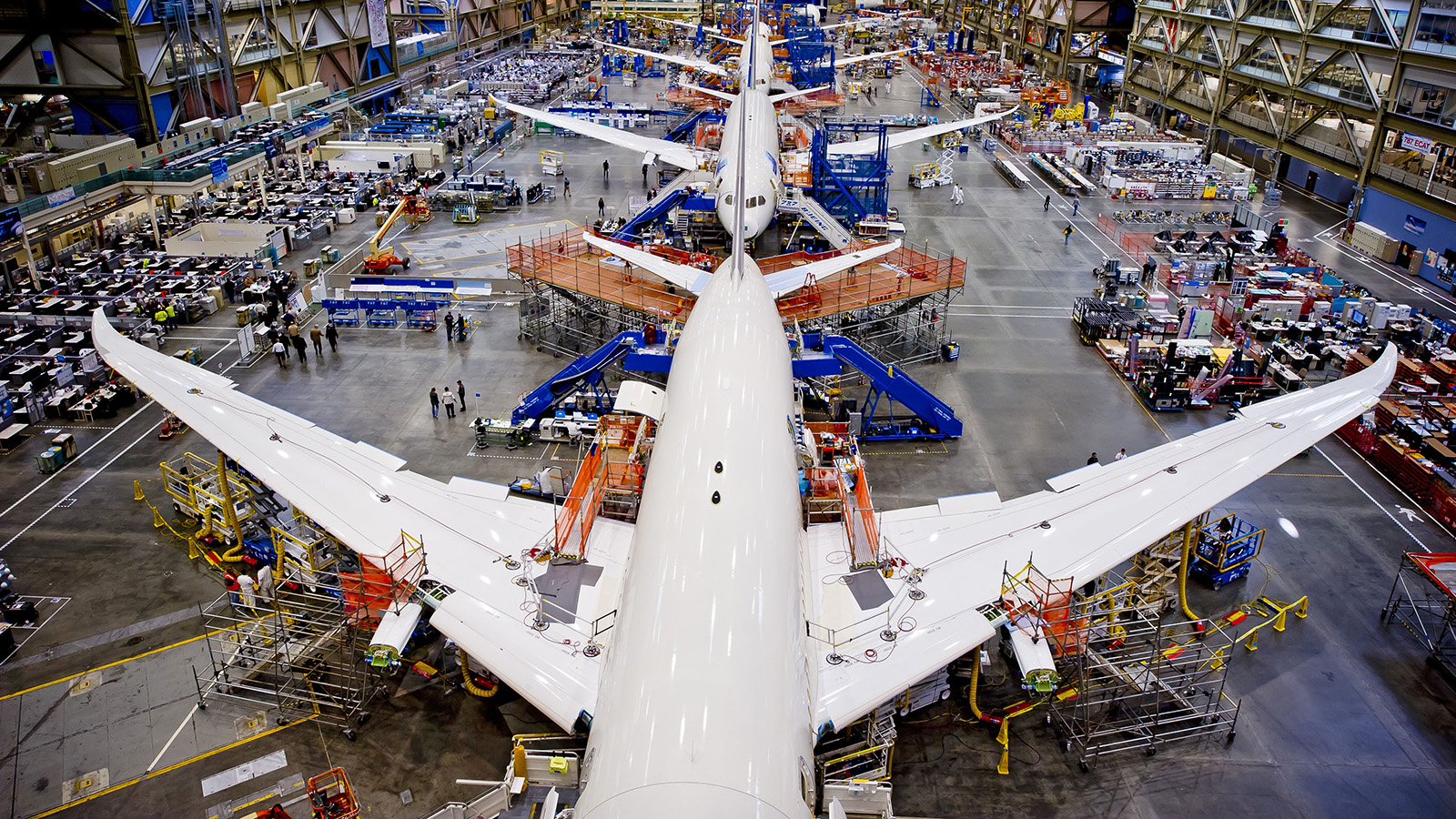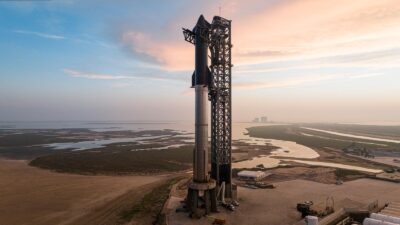Safety versus innovation: It’s time for a rebalancing
July/August 2023
The air transportation industry has for years toyed with radical new designs but in the end has always stuck with the familiar tube-and-wing approach in the face of FAA’s safety standards. Mislav Tolusic of the venture capital firm Marlinspike argues that accepting more risk will spark needed innovation.
Safety has its costs. Some are visible, as in the cost to install seat belts in cars. Others are invisible, as in the opportunity cost of innovations that are never made. These invisible costs are hard to calculate, but they are very real. In the 1960s, U.S. regulatory agencies started imposing more stringent performance standards on industry. Congress in 1962 granted the Food and Drug Administration powers to require proof of efficacy of new drugs before their release. This regulation not only increased the costs of developing and manufacturing drugs but also slowed the rate of innovation. Much like FDA’s actions, FAA regulatory efforts have slowed innovation in aviation and, in some cases, completely stopped it.
If the United States wants to lead the way in aviation innovation, Congress should fundamentally revisit the regulatory approach applied by FAA.
Risk aversion
Before we turn to aviation, consider that FAA long ago established an expected casualty rate for members of the public from commercial rocket launches. FAA’s acceptable expected casualty rate (injuries and deaths) stands at 30 per million missions, which works out to 0.00003 casualties per mission. As of now, exactly no one (excluding astronauts) has ever been killed in a rocket launch from the U.S. or by falling debris, my research shows. Meanwhile, in our daily lives, we accept that 20 people out of 100,000 will die each year in nonoccupational accidents, compared to an expected .003 casualties (injuries and deaths) each year in commercial space operations. These rates might have changed a bit in the years since FAA published them in an “Advisory Circular” in 2000 but not enough to undermine the point: For every death associated with rocket launches, we can expect 6,666 deaths from everyday risks.
Turning specifically to aviation, a person is almost three times more likely to die by lightning than in a commercial or general aviation plane crash, according to Allianz, the global insurance giant based in Germany. The reality is that our aviation safety standards have become excessive. Better would be to align aviation risks with those of automobile travel.
Cost of innovation
The economic costs of safety regulations are visible when one examines the cost of developing aircraft through history in constant 2004 dollars. The DC-6 was introduced 12 years before FAA was established, and it cost $144 million to develop. The Boeing 707 was introduced in 1958, the same year FAA was established, and it cost $1.3 billion. Costs exploded from there to $14.4 billion for the Airbus A380 introduced in 2007 and to $13.4 billion for the Boeing 787 introduced in 2012 [See chart below.]
Development costs are, of course, related to duration of aircraft development cycles. The development of the DC-3 started in 1934; two years later, the aircraft was in service with American Airlines. Today, according to FAA, certification of a new aircraft can take between five and nine years. Despite the technological advances of the last 90 years in computer simulation, software, aeronautics, materials science and other areas, the time and cost to develop aircraft have dramatically increased.
Not only are development costs soaring, but the speed of air travel is declining. The 1950s-designed Boeing 707 had a cruising speed of 525 knots, while today’s Boeing 787 cruises at 488 knots. Most modern airlines have cruise speeds between 480 and 510 knots. In 1973, FAA finalized a regulation banning civilian aircraft from flying faster than Mach 1 over land in the United States and from a certain offshore distance where sonic booms could reach land. FAA’s ban on supersonic flights effectively shut down innovation on commercial supersonic aircraft.
High regulatory costs also make it more financially advantageous for manufacturers to stay with established designs. Certifying changes to an existing aircraft design takes three to five years. It took five years to certify the MAX version of the Boeing 737 and eight years to certify the 787, a new design. It is no wonder that Boeing continues to make incremental improvements to the existing tube-and-wing jet concept it pioneered in the 1950s and ’60s, rather than shifting to more advanced designs like the X-48B Blended Wing Body and X-48C Hybrid Wing Body, whose flights Boeing concluded a decade ago. Another byproduct of the regulatory environment is today’s market duopoly between Airbus and Boeing. If regulatory costs were reasonable, new companies could be expected to enter and disrupt the market with newer and better products.
As matters stand, the principle of creative destruction in a marketplace has ceased to function.
Beyond air transportation, the drone industry has also been a casualty of an excessive regulatory environment. California-based Zipline offers drone delivery services. Despite being based in the U.S., one of the largest logistics markets in the world, the company has yet to roll out nationwide delivery services. Currently, the company offers limited services in Utah, Arkansas and North Carolina. However, it has been operating widely in Rwanda since 2016 and Ghana since 2019 and reportedly has logged some 400,000 flights and traveled some 43 million kilometers under autonomous operations. The main obstacles to a U.S.-wide rollout are the incredibly low risk of a collision with a passenger aircraft or injuries to those on the ground. These excessive safety concerns by FAA are standing in the way of billions of dollars in economic activity and innovation and ironically are preventing drones from delivering lifesaving medical supplies and equipment to rural areas.
The way forward
To reignite the engines of innovation and entrepreneurialism, Congress should instruct FAA to revise regulatory goals, adjust risk standards and revisit regulatory cost-benefit analysis protocols.
Let’s first look at regulatory goals. FAA’s mission statement says: “Our continuing mission is to provide the safest, most efficient aerospace system in the world.” However, FAA’s Aircraft Certification Service describes its contribution to FAA’s mission purely in terms of safety: “AIR supports this mission by assuring aircraft that operate in the [National Airspace System] meet safety standards and society’s expectations for safety.” This singular focus on safety means that the organization is not concerned with economics or overall suitability of the standards, and that’s why the aircraft certification process is long and expensive. To pressure FAA to deliver on the efficiency aspect of its mission, Congress should require the agency to state its goals for the year in the following three parameters, and in a report to Congress, reconcile those goals with what has actually been achieved:
1) Creation of economic activity
The Bureau of Economic Analysis breaks down contribution to gross domestic product by industry. Using BEA’s analysis, we can see how the aerospace industry contributes to gross domestic product. FAA’s mandate should be tied to the creation of economic activity; this would be a huge incentive for FAA to be more cautious when investigating accidents and deeming one-off problems as systemic. It would also incentivize the agency to develop less onerous rules and regulations, shortening the certification process and allowing innovative companies like Zipline to more quickly develop domestic operations.
2) Increase in speed of travel
Most passengers would agree that the ultimate reason for air travel is speed — the less time aboard the plane, the better. Measuring aircraft speed would align goal incentives of FAA with a general performance matrix that passengers value. Increasing the speed of travel should lead to faster airplanes; commercial supersonic flights should not be a distant memory from the 20th century.
3) Duration and cost of certification process
Product cycles in information-technology industries are less than two years. In IT terms, the five years that it takes, at best, to certify a new design would be the equivalent of a lifetime; the nine years it can take is an eternity. If FAA were incentivized to shorten the certification process, we could expect aircraft product development cycles to decrease. Likewise, we should also expect a decline of aircraft development costs. If aircraft development costs were again measured in millions versus billions, we could expect an aerospace revolution. New companies would enter the market, there could be a path to hypersonic travel, electric vertical takeoff and landing aircraft would not be a distant dream and, perhaps, we might even have personal flying cars.
Adjust the risk standards
Baseline safety standards should reflect everyday risks. While FAA likes to remind us that flying is safer than driving, the general public doesn’t consider driving to be a dangerous activity. It is perfectly reasonable for airplanes and cars to have the same safety standards. As a starting point for reform, FAA should ease its current safety standard, which says that fatal events (like a complete loss of an aircraft’s flight control system) should happen no more than once in a billion flying hours. This standard is unrealistically high; the 737 is Boeing’s best and longest selling aircraft. As of 2014, these aircraft had collectively flown 264 million hours, meaning that the cumulative flying hours for all 737s ever built are still nowhere close to a billion. If we lower the risk standard, we can expect a decrease in the product development cycles, which should lead to shorter aircraft service lives as new aircraft are developed at a faster rate. End results will be cheaper aircraft and a more innovative industry.
Adjust the cost-benefit methodology
Some government agencies use value of statistical life estimates to effectively put a price on human life. The idea behind the VSL is to understand how much people would pay to reduce the possibility of dying; that reduction is then converted into how much the public values a life. The VSL is used to ensure that the benefits of regulations exceed the imposed costs.
The Department of Transportation sets the VSL used by FAA. Today, the VSL is set at $12.5 million. However, according to recruitment firm Zippia, an average U.S. worker earns $1.7 million over a lifetime, meaning the VSL is valuing lives at seven times the average lifetime earnings. The current VSL approach does not deliver realistic results, and it would be more logical to adjust the VSL to our economic realities. For every fatality, the economy at large loses one unit of lifetime earnings. Resetting the VSL to actual lifetime of earnings would make much more sense.
Current elevated VSL levels allow government agencies to easily enact costly mandates. For example, if a new regulation would save 80 lives, a billion-dollar regulatory burden, in this view, becomes justified. FAA only needs to prove that one aircraft would be saved from crashing. As a result, aircraft manufacturers are spending hundreds of millions of dollars just to certify a commercial airliner. Implications on innovations are very real — investors shy away from investing in commercial aircraft manufacturing companies. If we reduce the VSL, we can expect regulatory costs to come down and investor interest to increase.
The current regulatory system is highly restrictive and, as a result, the rate of innovation has slowed and, in some cases, stopped altogether. In the 1960s as we entered the jet age, the Jetsons showed us what a future with flying cars could look like. Sixty years later, personal flying cars are still only garage projects; flying from New York to London takes longer than it did in the last century; and drone deliveries at scale are only possible in countries with underdeveloped regulatory agencies. This is the status quo we have been living in for the last couple of decades. The time has come to analyze the outcomes of current regulatory approaches and revise these approaches to foster more innovation.
Related Topics
Aircraft SafetyMislav Tolusic

is a managing partner at Marlinspike, a venture capital firm in Washington, D.C.










